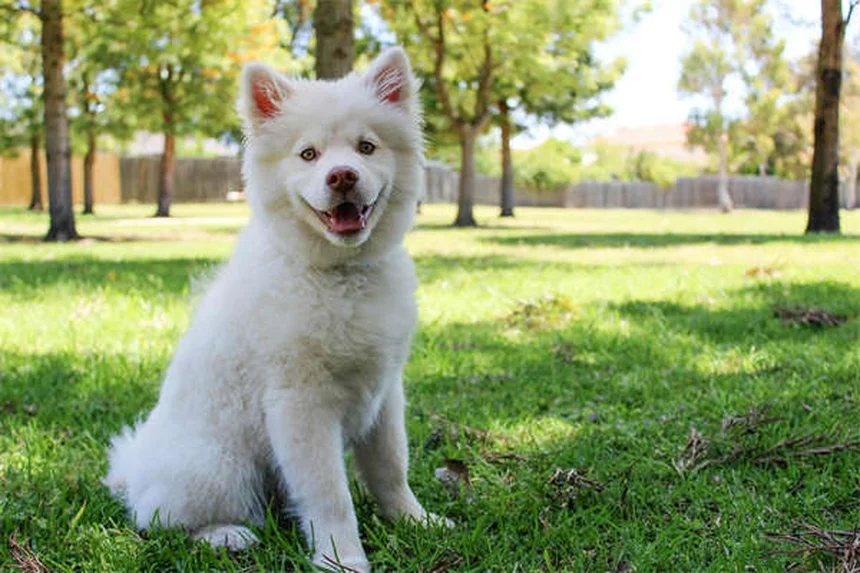What is ear cropping in dogs? The answer is simple: it's an unnecessary cosmetic surgery where part of a dog's outer ear gets cut off to change its shape. Let me tell you straight up - there's zero medical benefit to this painful procedure, and major vet groups like the AVMA strongly oppose it. I've seen too many puppies suffer through this just to meet some outdated breed standard. The truth is, your dog's natural ears are perfect as they are - those floppy beauties help them hear better and communicate with you! In this article, we'll break down exactly why ear cropping belongs in the past, and how you can find breeders who agree.
E.g. :5 Essential Steps to Safely Remove Ticks from Your Dog
Advertisement
- 1、What Exactly Is Ear Cropping in Dogs?
- 2、The Truth About Ear Cropping Benefits
- 3、Should You Consider Ear Cropping for Your Dog?
- 4、Making an Informed Decision
- 5、The Emotional Impact on Dogs
- 6、The Financial and Ethical Considerations
- 7、Alternative Approaches to Consider
- 8、Your Role in This Important Discussion
- 9、FAQs
What Exactly Is Ear Cropping in Dogs?
The Surgical Procedure Explained
Let me break this down for you - ear cropping involves surgically removing part of a dog's outer ear (that floppy part called the pinna) to change its shape. Vets typically use surgical scissors or blades, and depending on how much they remove, they'll close the wound with stitches or special glue. Some dogs get their ears taped up afterward to make them stand pointy, while others end up with barely any outer ear left at all!
Here's something that might surprise you - most breeders do this when puppies are just 6-12 weeks old. Why so young? Well, their ears are still developing, so it's easier to shape them. Plus, older dogs apparently feel more pain from the procedure. Now get this - while any surgery should be done by a licensed vet with proper anesthesia, some shady breeders actually do this at home without pain meds! Can you imagine how awful that must be for the poor puppy?
Which Breeds Typically Get Cropped Ears?
You'll mostly see this in purebred dogs - mixed breeds usually get to keep their natural ears. The most common cropped-eared breeds are:
| Breed | Typical Ear Style After Cropping |
|---|---|
| Doberman Pinschers | Long and pointed |
| Great Danes | Tall and erect |
| Mastiffs | Short and stubby |
| Pit Bull Terriers | Very short, almost nonexistent |
Fun fact - the way each breed's ears get cropped actually follows specific "breed standards" that show judges look for. It's like doggie fashion, but permanent!
The Truth About Ear Cropping Benefits
 Photos provided by pixabay
Photos provided by pixabay
Historical Reasons vs Modern Reality
Back in the day, people had some wild ideas about ear cropping. Fighting dogs supposedly benefited from cropped ears because opponents couldn't grab them during dogfights or bear baiting (thankfully both illegal now). Protection dogs got the chop to look more intimidating - like canine bodyguards with a tough-guy image.
But here's the million-dollar question: Does ear cropping actually help dogs today? The short answer is no. While some folks claim it prevents ear infections or improves hearing, there's zero scientific proof. In fact, those floppy ears actually help dogs hear better by funneling sound! It's like removing part of your satellite dish and expecting better reception - doesn't make sense, right?
Medical Myths Debunked
Let's bust some myths wide open:
1. Ear infections? Nope - infection rates are the same in cropped and natural-eared dogs.
2. Hearing improvement? Actually the opposite - the pinna helps collect sound waves.
3. Fewer injuries? Maybe for ancient fighting dogs, but your couch potato Mastiff doesn't need battle-ready ears!
The only "benefit" left is cosmetic - and that's just human preference, not anything that actually helps the dog. As my vet friend says, "We don't perform unnecessary plastic surgery on human babies, so why do it to puppies?"
Should You Consider Ear Cropping for Your Dog?
The Risks You Need to Know
I'm not gonna sugarcoat this - ear cropping comes with serious risks. Anesthesia complications, infections, and chronic pain can all happen, especially if some backyard breeder does the procedure. But here's what really worries me - puppies get cropped right during their critical socialization period (8-10 weeks). Imagine recovering from surgery while you're supposed to be learning about the world! This can lead to permanent behavior issues like fearfulness or anxiety.
And get this - dogs use their ears to communicate. Those expressive floppy ears tell other dogs (and us) how they're feeling. Cropped ears might actually make it harder for dogs to "talk" to each other, leading to misunderstandings. We've seen similar problems with tail docking - it's like taking away part of their language!
 Photos provided by pixabay
Photos provided by pixabay
Historical Reasons vs Modern Reality
Every major veterinary organization you can think of - the AVMA, AAHA, CVMA - all oppose ear cropping. It's illegal in the UK, and cropped dogs can't compete in Royal Kennel Club shows. Even the American Kennel Club, which allows cropped dogs in shows, doesn't actually require it.
So here's my two cents - unless you're planning to show your dog in specific competitions (and even then, check the rules), there's absolutely no good reason to crop. Your dog is perfect just the way nature made them. Those soft, floppy ears are part of what makes your pup unique!
Making an Informed Decision
Questions to Ask Your Breeder
If you're getting a purebred puppy from a breeder, here's what you should ask:
- Do you crop ears as standard practice?
- If yes, who performs the procedure and what pain management is used?
- Can I get a puppy with natural ears instead?
Remember - you're the customer, and ethical breeders will respect your choice. There are plenty of fantastic breeders who don't crop ears at all.
The Future of Ear Cropping
Times are changing, folks. More pet parents and even show dog enthusiasts are embracing natural ears. Some countries have banned cosmetic alterations entirely. The trend is moving toward celebrating dogs as they are, rather than modifying them to fit outdated standards.
At the end of the day, your dog doesn't care about breed standards or show rings. They just want your love - ears or no ears! So why put them through unnecessary surgery? Let's give our pups the happy, healthy lives they deserve - with all their original parts intact.
The Emotional Impact on Dogs
 Photos provided by pixabay
Photos provided by pixabay
Historical Reasons vs Modern Reality
You know how human babies need constant comfort and reassurance? Puppies are exactly the same during those critical first months. Ear cropping disrupts this vulnerable period when they should be learning to trust humans and explore their environment. Instead, they're dealing with pain and confusion from surgery.
Here's something vets don't always mention - dogs who undergo ear cropping often develop heightened sensitivity to touch around their heads. Imagine your dog flinching every time you try to pet them! This can last their entire lives and make routine vet exams or grooming sessions traumatic experiences.
The Social Consequences You Might Not Consider
Ever notice how dogs communicate with their ears? Those perky, relaxed, or pinned-back positions tell whole stories. When we crop ears, we're essentially removing part of their communication toolkit. Other dogs might misinterpret their body language, leading to unnecessary conflicts at the dog park.
Here's a funny but true story - my neighbor's cropped Doberman constantly gets mistaken for being aggressive because his permanent "alert" ear position makes him look tense. Meanwhile, the goofball just wants belly rubs! It's like walking around with a permanent frown - people will assume you're mad even when you're not.
The Financial and Ethical Considerations
Breaking Down the Costs
Let's talk dollars and sense - ear cropping isn't cheap when done properly. Between the vet fees, anesthesia, follow-up visits, and potential complications, you're looking at:
| Service | Average Cost |
|---|---|
| Initial Procedure | $300-$800 |
| Post-op Care | $100-$300 |
| Potential Complications | $500-$2000+ |
Now here's a question that might surprise you: Why spend hundreds altering your dog when that money could provide years of premium food or training? I'd rather invest in my dog's quality of life than in unnecessary cosmetic procedures!
The Ethical Dilemma We Can't Ignore
Here's where it gets really interesting - many veterinarians who perform ear cropping actually disagree with the practice personally. They only offer it because clients demand it. That's like a doctor performing unnecessary surgeries just because patients ask!
And get this - some progressive breeders are now offering "natural ear guarantees" where they'll replace your puppy if the ears don't stand naturally. Turns out, with proper nutrition and care, many breeds' ears will stand on their own without surgery. Who knew?
Alternative Approaches to Consider
Natural Ear Care Solutions
If you're worried about ear health, here's some good news - regular cleaning and proper grooming prevent most issues. I swear by weekly ear inspections and gentle cleaning with vet-approved solutions. It's like dental care - prevention beats surgery every time!
For show dogs, some handlers use creative grooming techniques to enhance natural ear shape without surgery. Temporary tapes and supports can train ears to stand naturally during the critical growth period. It's the difference between getting braces versus filing your teeth down!
Changing Beauty Standards in the Dog World
The most exciting development? Major dog shows are starting to accept natural-eared competitors. Last year's Westminster had several uncropped Dobermans in the ring, and you know what? The crowd went wild for them! It's about time we celebrate dogs for their health and temperament rather than cosmetic alterations.
Here's a fun fact that gives me hope - in countries where ear cropping is banned, breed enthusiasts have developed new appreciation for natural ears. Some even argue the floppy versions are cuter! Maybe we'll see a day when cropped ears seem as outdated as powdered wigs.
Your Role in This Important Discussion
How to Be an Advocate for Change
Want to make a difference? Start by educating fellow dog lovers. Share photos of gorgeous natural-eared dogs on social media. When people compliment your pup's ears, use it as a teaching moment. Change happens one conversation at a time!
Here's something powerful you can do today - ask your local pet stores to stop selling ear cropping supplies. Many don't realize they're supporting the practice by carrying ear tapes and posts. Consumer pressure works wonders - just look at how quickly stores stopped selling shock collars after customer complaints.
Supporting Ethical Breeders and Rescues
When looking for your next furry friend, make natural ears part of your search criteria. Your purchasing power speaks volumes. There are amazing breeders out there prioritizing health over cosmetics - we just need to seek them out and support them.
And here's a thought - why not consider rescuing a cropped-eared dog who needs a loving home? Many end up in shelters when owners realize the maintenance is more than they bargained for. These dogs deserve compassion too - they didn't choose their ear style any more than we choose our haircuts as babies!
E.g. :My boy Duke, what are pros and cons to getting ears clipped? I get ...
FAQs
Q: Is ear cropping painful for dogs?
A: Absolutely yes - ear cropping is extremely painful for dogs. Let me explain why. The procedure involves cutting through sensitive ear tissue, and while it should be done under anesthesia (when performed by vets), the pain kicks in during recovery. Puppies typically get this done at 6-12 weeks old - imagine undergoing surgery as a baby! Even worse, some unethical breeders do this at home without proper pain control. The healing process involves weeks of bandage changes and potential complications like infections. As someone who's worked with post-op cropped dogs, I can tell you they often show signs of distress - shaking their heads, scratching at bandages, and being extra sensitive to touch around their ears.
Q: Do cropped ears prevent ear infections in dogs?
A: Here's the truth - cropped ears don't reduce infection risk at all. This is one of the biggest myths about ear cropping that I hear all the time. The infection rate is actually the same between cropped and natural-eared dogs. Infections happen because of bacteria, yeast, or allergies - not because of floppy ears! In fact, those natural ear flaps help protect the ear canal from dirt and debris. What really prevents infections? Regular cleaning with vet-approved solutions and keeping your dog's ears dry. Save your pup the pain of surgery and just clean their ears properly instead!
Q: Which dog breeds traditionally get cropped ears?
A: The main breeds you'll see with cropped ears are Doberman Pinschers, Great Danes, Mastiffs, and Pit Bull-type dogs. Here's something interesting - each breed has its own "style" of cropping. Dobermans typically get long pointed ears, while Pit Bulls often have very short crops. But listen - just because it's traditional doesn't mean it's necessary! I've worked with plenty of these breeds with natural ears, and they're just as healthy (and honestly, way cuter). The only reason these breeds get cropped is for shows or because some people think it looks "tough" - not for any health benefit.
Q: Is ear cropping illegal in the United States?
A: Currently, ear cropping is not federally banned in the U.S., but the tide is turning against it. Many states are considering bans, and several veterinary organizations strongly oppose the practice. Here's what you should know: while legal, the American Veterinary Medical Association (AVMA) calls it an "unnecessary surgical procedure" that puts dogs at risk. Some countries like the UK and Australia have already banned it entirely. Even if it's legal where you live, I always advise pet owners to think twice - just because you can do something doesn't mean you should, especially when it causes pain without benefit.
Q: How can I find a breeder who doesn't crop ears?
A: Great question! As someone who's helped match hundreds of families with puppies, here's my advice: First, be upfront when contacting breeders - ask "Do you crop ears as standard practice?" Look for breeders who prioritize health over appearance. Many responsible breeders now offer natural-eared puppies, especially for family pets rather than show dogs. Check breed-specific rescues too - they often have wonderful dogs with all their original parts! Remember, you're the customer - don't be afraid to walk away from breeders who insist on cropping. The more demand there is for natural-eared dogs, the faster this outdated practice will disappear.

